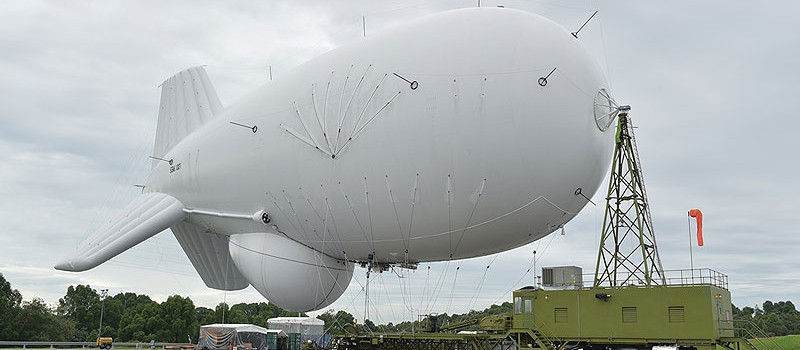The Ministry of Defence (MINDEF) has announced that the Republic of Singapore Air Force (RSAF) plans to deploy an aerostat to complement the Singapore Armed Forces’ (SAF’s) suite of sensors to identify potential aerial and maritime threats early which will allow for timely and decisive response to safeguard Singapore’s peace and security.
The Aerostat is a tethered helium-filled balloon that’s attached with a 360-degree censor to monitor threats over Singapore’s air and sea space. RSAF had earlier announced of its interest in the Aerostat in Oct 2014, to circumvent constraints faced by the existing systems, mainly due to the construction of taller buildings which prevent the systems from establishing a clear line of sight.
Minister for Defence Dr Ng Eng Hen observed the local testing of the aerostat system at Choa Chu Kang Camp earlier on Tuesday.
Speaking after his visit, Dr Ng highlighted the aerostat’s abilities to enhance the SAF’s aerial and maritime surveillance capabilities. He said, “Well, all of us recognise that Singapore is a very small island, and that alone makes us vulnerable to threats, either from the air or sea. And for small city states like Singapore, the need to put up defences must depend on layers of defence. We’ve procured this aerostat, and it adds another layer of defence and confidence in terms of what we are able to detect, in terms of aerial and maritime threats.”
“The very fact that we have this extra layer gives us added confidence and I think it will help us and give us extra confidence to have this aerostat,” he added.
According to MINDEF, the aerostat has completed initial tests at the manufacturer’s facility in the United States, and is proceeding to the next stage of testing by the manufacturer in Singapore. The tests will involve progressive and comprehensive checks on all aspects of the aerostat as well as complex system tuning for local operations.
It noted that the tests will ensure that the aerostat meets the RSAF’s stringent operational requirements and high safety standards before it is deployed for operations.
MINDEF also stated that the aerostat will have several safety features when being deployed. It will be secured to its ground mooring station with high-strength winch lines and a Kevlar tether built to withstand strong winds and lightning strikes.
Radiation emissions from the radar equipment on the aerostat will be as safe as that of mobile phones, and have been certified in accordance with the IEEE C95.1-2005 standard – the same standard applied to certify the safety of mobile phones and microwave ovens.
Quick Facts about the Aerostat System

For safety, RSAF has been working with the Civil Aviation Authority of Singapore (CAAS) to plan the safe operations of the system in Singapore’s congested airspace, and safety procedures such as issuing Notice-to-Airmen (NOTAM) to inform aviators of the aerostat’s presence.








